PS5
How does Insomniac improve on an excellent Spider-Man game? By doubling the number of Spider-Men. At least, that seems to be the theory following the success of its standalone Miles Morales spin-off. Sticking him and Peter Parker into the same game provides twice as many sarcastic quips and cheesy asides, alongside some truly phenomenal action sequences. But bigger often doesn’t equal better, as Horizon Forbidden West proved, and such is the case here. That’s not to say Spider-Man 2 is a bad game; far from it. It’s a technical marvel which plays brilliantly (for the most part), has deep, interesting protagonists and story beats which are worthy of anything that’s been shown on the silver screen.
Spider-Man has always succeeded — where much of Marvel’s oeuvre fails — thanks to its humanity and the lack of depictions of straight up good or evil. The protagonists are often exhausted from juggling their time between normal life and superhero shenanigans, and balancing fifteen different requests from various friends, family and authorities alongside trying to get jobs or finish assignments. But on the flip side, the bad guys are usually victims of circumstance, cursed by their desperate parent’s need to heal their child (in the case of the Osborns) or well-meaning experiments that go awry (as is the case with Lizard). Harry Osborn’s arc into darkness, while signposted early doors, is still an often moving story of a tragic figure. Not all such characters are that subtle, though. Kraven the Hunter is a ridiculous scene-chewing villain with an army the size of a small nation which has somehow infiltrated New York City and is perpetrating all manner of crimes. Goodness knows how he managed to bring in so many clearly evil-looking people, weaponry, and aircraft into the country; the immigration paperwork must have been insurmountable.
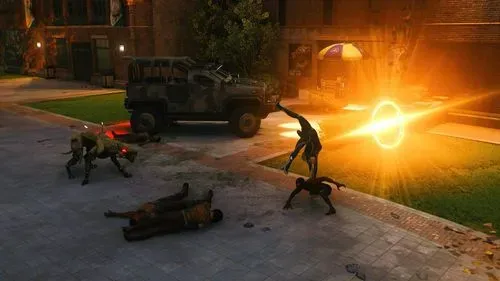
Kraven’s exploits are the narrative thread for the bulk of the game, as he runs through a checklist of villains and semi-villains, targeting them for funsies while Miles and Peter frantically play catch up. I say frantically, but the pacing is erratic. One moment you’re facing off against hordes of Hunters to try and identify bits of tech to put you onto Kraven’s tail, the next you have to take a break to go and help your buddy Ganke at a science fair, or stop and help the local fire department deal with a cult organisation, or help Sandman recover his memories (after a notably brilliant introductory boss sequence). Other characters who pop up are best left as a surprise, so won’t be covered here.
There is a LOT to do in this sequel. The busywork meter is simply off the scale. In the first few hours you’ll be tasked with taking photos, collecting crystals, finding tech caches, performing field experiments, completing science projects, collecting Spider-bots, responding to app requests, and indulging Mysterio in challenge arenas. This is just scratching the surface, and doesn’t even cover the real-time requests that come in as you traverse the city where hoodlums are doing everything from branding people to stealing cars.
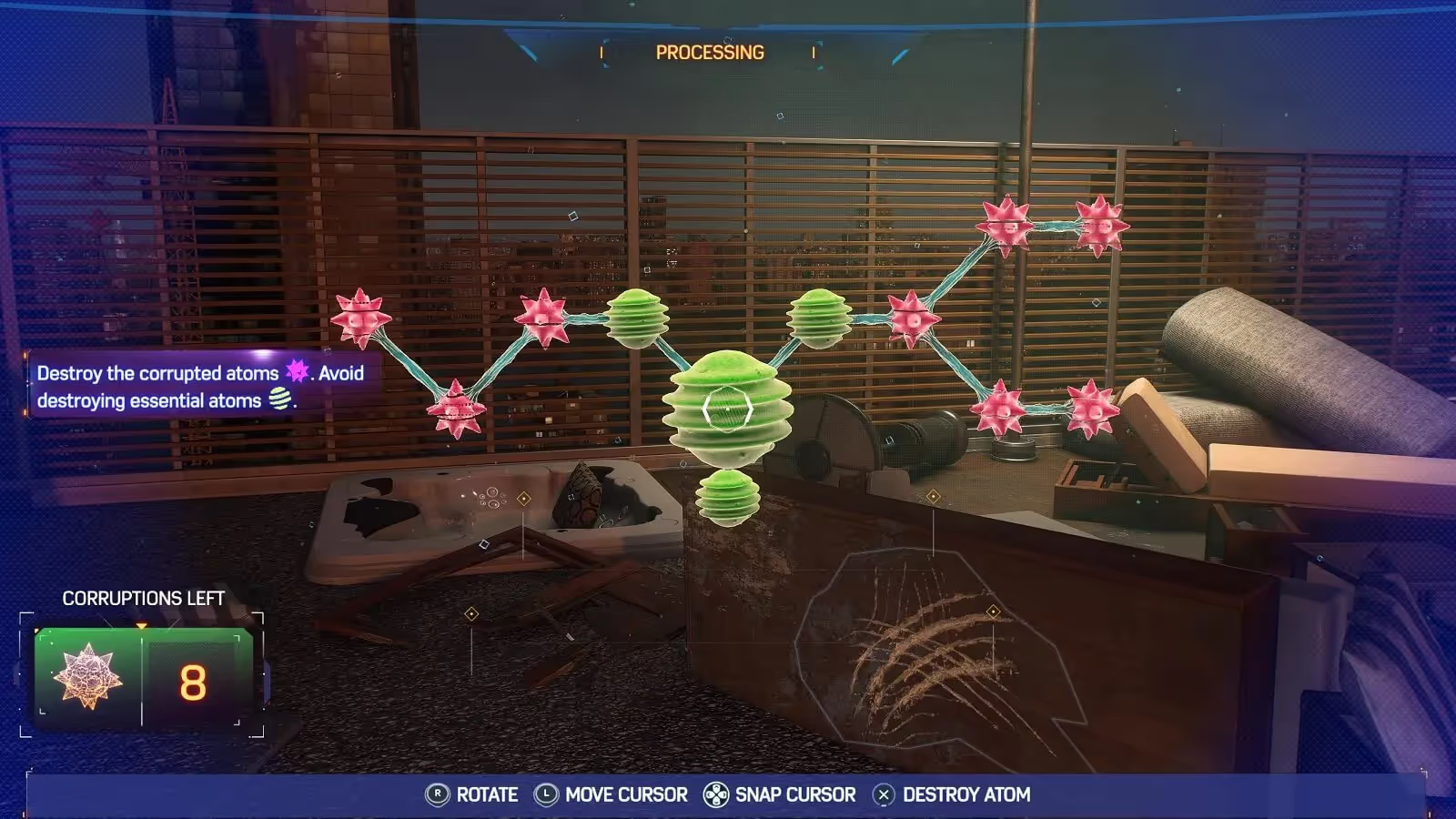
Then there are the minigames: fixing power supplies, creating DNA sequences, cracking codes, playing space invaders with bees, competing at funfair games and so on. The game is so stuffed with experiences like this — half good, half forgettable — that they threaten to derail the main story entirely. For every related aside, such as Harry and Peter’s childhood relationship being enacted through a stealth sequence around a school, there’s a similar sequence such as Mary Jane going — yes, full stealth — to try and break out a prisoner. MJ’s stealth sections are an improvement on the first game, but still feel like a basic palate cleanser to the main course of smashing people in the face with electrical boxes (in a non-lethal way, obviously).
Many players will enjoy the amount of things the game tasks you with doing, and those that don’t can ignore many of them so it isn’t as if they’re an inconvenience. But when you do complete a series of tasks, the payoff is often disappointing. Tiny bits of lore feel like sparse reward for several hours of city traversal and battering people’s heads in.
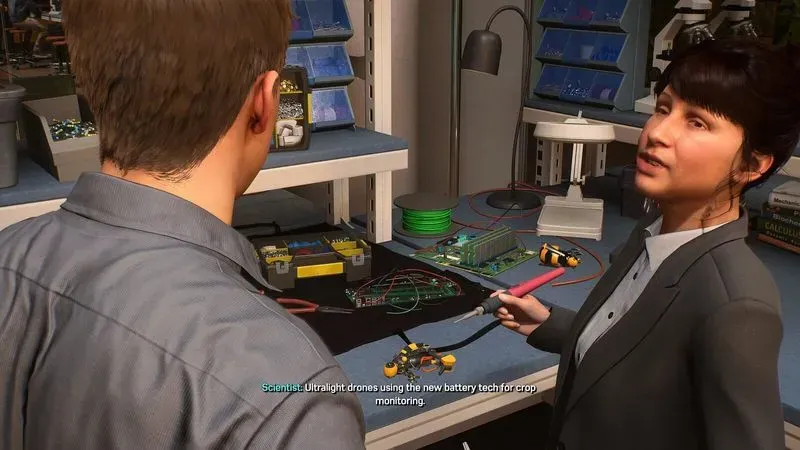
Fortunately, combat is as enjoyable as the first game. Insomniac hasn’t made too many changes to the formula, which in itself was a riff on the Arkham series but far more fluid. Spidey (whichever one you play as, and you can usually flit between them for different story missions) controls well and gives you the impression of speed and reaction you’d expect from someone who can bounce off — or stick to — walls, web people from a distance, or swing objects and people around like yo-yos. Peter’s mechanical spider suit and Miles’ electrical powers differentiate the two characters from the outset; I actually found Miles the more satisfying character to play early on due to his area of effect specials. When the Symbiote suit makes an appearance, Peter’s combat feels much more closely aligned to Miles’ in terms of enjoyment. Gadgets also return and, like powers, these are on a cooldown timer so you’re never waiting too long to break out one or the other to help turn a battle around. The new Web Grabber is the best of the bunch here, as it pulls in enemies (and objects when you upgrade it) and smashes them together in one supremely fun action. Otherwise, aside from a bit more polish and a few new tricks, not much has changed with the bulk of battles.
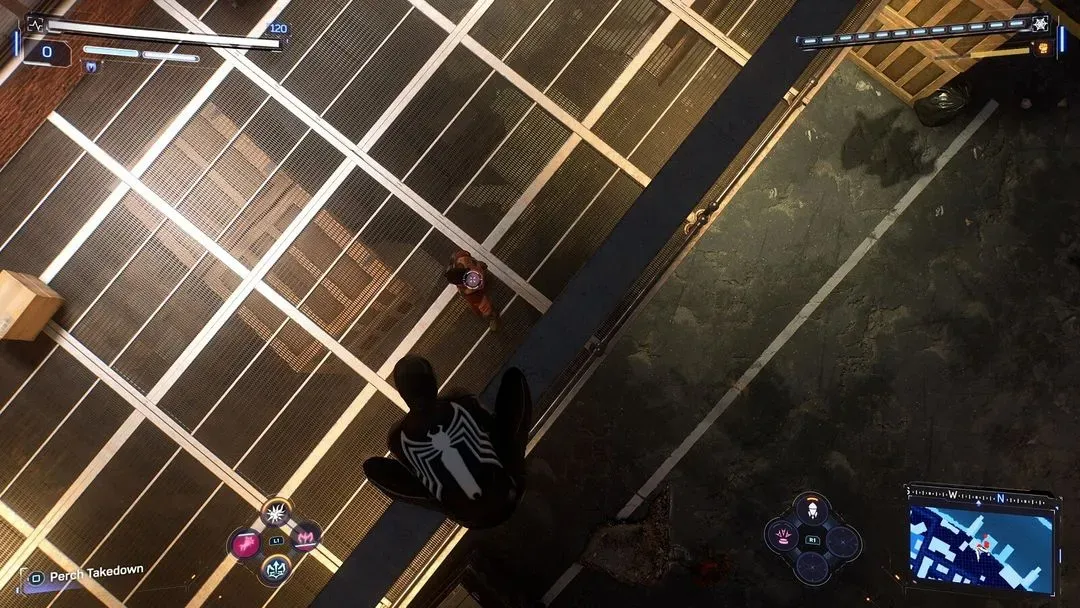
And there are plenty of battles. Each mission or side mission usually culminates in Spider-Man facing off against a dozen or more Hunters, Sandmen, robot dogs, Brutes, or other variations. Some have guns, some wield melee weapons. Your power bars will let you heal your wounds or perform instant takedowns, and a skill tree covers each individual protagonist as well as one with shared skills. And yes, you’ll need to collect tech parts, rare tech parts, skill points, city tokens and the like to make the most of all of your gadgets and abilities, all of which can be done by completing the main story missions but mostly by jumping into the aforementioned side quests and optional busywork. Boss fights improve on the first game’s “web them then hit them” approach; it seems like Insomniac have been playing a fair bit of God of War since bosses are now multi-stage affairs which add more variety. Spider-Man 2 also draws from other games in ways that don’t really feel appropriate for the setting, including a bizarre pivot to Resident Evil 4-style gunplay in the final third, exploding barrels and all.
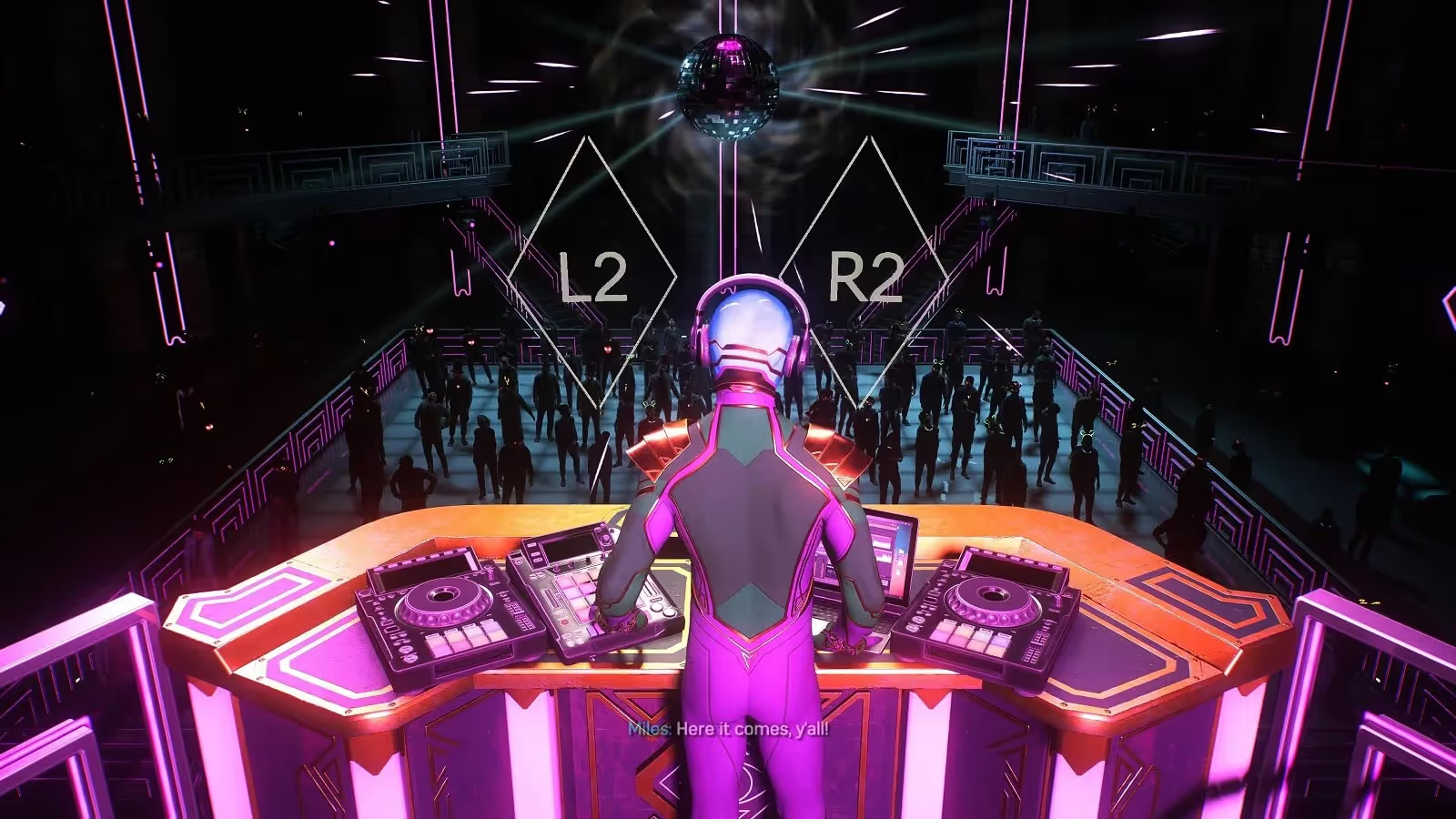
On the navigational front, traversing the city now includes Web Wings alongside your trusty shooters. Given the city feels much, much bigger than before, you’ll appreciate the slight bump to speed that the wings provide. In another nod to the game’s bloat, fast travel is unlocked only when you complete enough tasks in a district, which means you're forced into doing busywork just so you can get around faster. And if there’s any doubt that some of it is extraneous, you can switch puzzles off in the options menu if you wish, begging the question of why they were included in the first place. I would far rather have been able to travel as I saw fit, rather than have it gated behind side missions. The city — a bit like Arkham City — is beautiful and buzzy, but oddly hollow. Pedestrians are everywhere but they don’t offer anything of note outside of the times you need to take photos of specific activities. And given the amount of destruction you wreak upon the city throughout the game — literally billions of dollars by my count — I’m surprised there’s anyone left hanging around outside. I’d have moved states.

Visually and audibly, Spider-Man 2 is sumptuous. There is absolutely no doubt that this is a superhero game. Aside from the insanely beautiful carnage as New York’s buildings get pummelled again, it’s soundtracked by a thrilling orchestral suite and well-picked indie hits (anything that uses The Shins’ New Slang gets bonus props immediately). The importance of cinematography in a game like this cannot be emphasised enough, and yet the technical achievement on show is so subtle that many players won’t fully appreciate the thought that has gone into each shot, each pan, every camera angle or cut. It’s truly a sight to behold.

Even with the high production values though, some odd minor issues have been overlooked. Subtitles are sometimes wildly out of sync with what's being said and the sound dropped entirely before a boss fight. At one point in a non-combat section, I got in a lift with Harry, who then refused to leave it despite telling me to "come on". The game hung at on-screen prompts, forcing me to restart the last checkpoint. The Web Wings frequently reversed my direction of travel when switching to my rope, which was incredibly annoying given the number of “chase X across the city and catch up with them” missions. Then there are the plot holes, such as a particle accelerator deemed to be broken early on suddenly becoming easily fixable when the story requires it, or Peter (dressed as Spider-Man) calling Miles for help — by name — in front of a load of muggles. With great power comes a great lack of discretion.
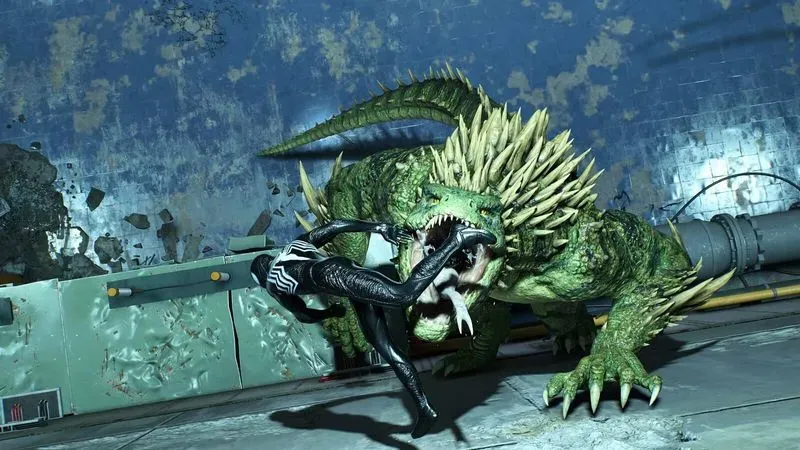
Thankfully, the bloat (over twenty hours for the main campaign with only around 60% completion) and the niggles don’t tank an otherwise stellar game. There are umpteen jaw-dropping cutscenes amongst the equally sumptuous action segments, with the Foundry in particular being a standout. The acting is top notch, the sound design is wonderful, the game runs like a buttery smooth dream and the haptic trigger usage actually makes sense rather than feeling like a throwaway addition just to pay lip service to the DualSense. Multiple difficulty levels cater for all ranges of ability and the story — when it’s allowed to take centre stage — speaks to several pretty deep themes about belonging and self-worth that go way beyond what you’d expect from a blockbuster superhero game. It may be an incremental improvement on the first Spider-Man, but Insomniac has shown it has the chops to handle comic book icons with flare and care. Hopefully the inevitable third game won’t go the way of Rocksteady’s Arkham Knight and taint the series — it feels like Insomniac has too much respect for the franchise to let that happen.
You can subscribe to Jump Chat Roll on your favourite podcast players including:
Let us know in the comments if you enjoyed this podcast, and if there are any topics you'd like to hear us tackle in future episodes!



